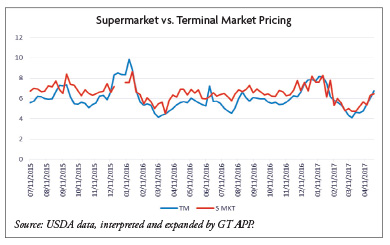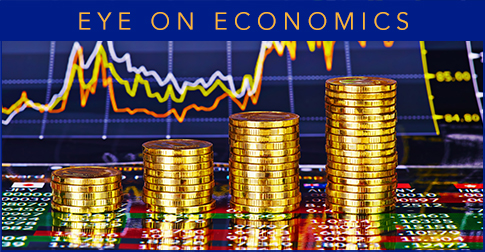Since green asparagus dominates more than 80 percent of supply, it shapes the market. Highest pricing is from December to January, followed by May and September. From 2011 to 2016 there was an annual growth rate in pricing of 15 percent, reaching an average annual price of $5.69 per kilogram for 2015.
From 2015 to 2016, the annual price fell by 3 percent but reached a higher price in January 2016 of $8.32 per kilogram, 19 percent higher than 2015. The next year, 2017, started with a January price 19 percent below 2016, and for February to April, prices where 4 percent above 2016.
Three of the markets—Miami, Los Angeles, and New York—follow a similar pattern for green asparagus, though Los Angeles pays higher prices in the off season, followed by Miami during the U.S. production season.
Demand and pricing
In the case of the green asparagus and comparing international prices for the United States, Mexico, and Canada, Toronto pays the highest prices, with Montreal and New York in between.


Although white asparagus represents only 12 percent of U.S. market transactions, it is a very different story in European markets, especially Germany and France. In the United States, we can see an interesting year-to-year trend in pricing, with an annual average price increase of 12 percent from 2011 to 2016.
In this period, the total price increase was 60 percent starting at $4.73 per kilogram in 2011 and ending at $7.56 per kilogram in 2016. One of the causes was reduced Peruvian production for fresh white asparagus. For 2017, despite a rough start for February and March, pricing rebounded in April.
In tracking green asparagus and international pricing, Toronto pays the highest while New York and Montreal pay lower prices. For white asparagus, Toronto also shows higher pricing when compared to Chicago or Paris.



